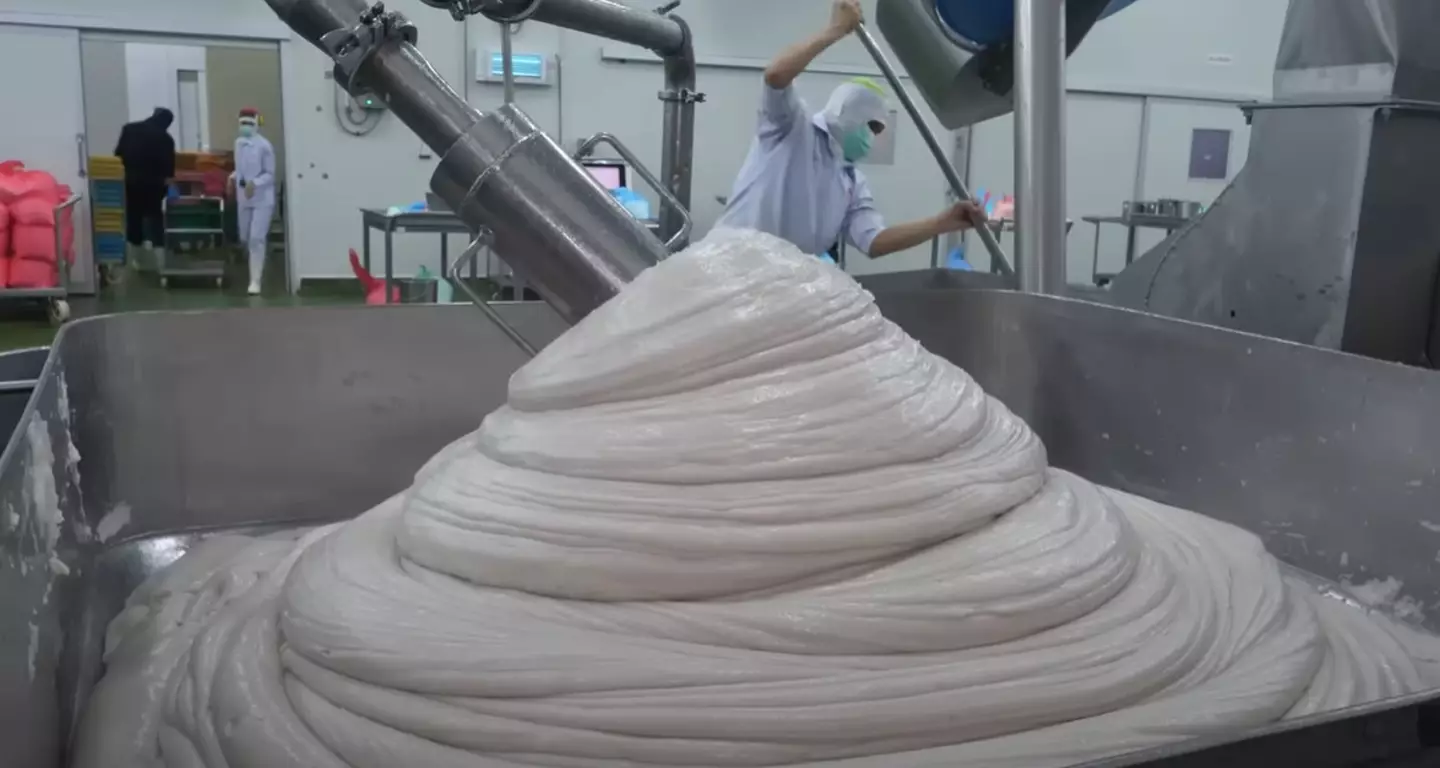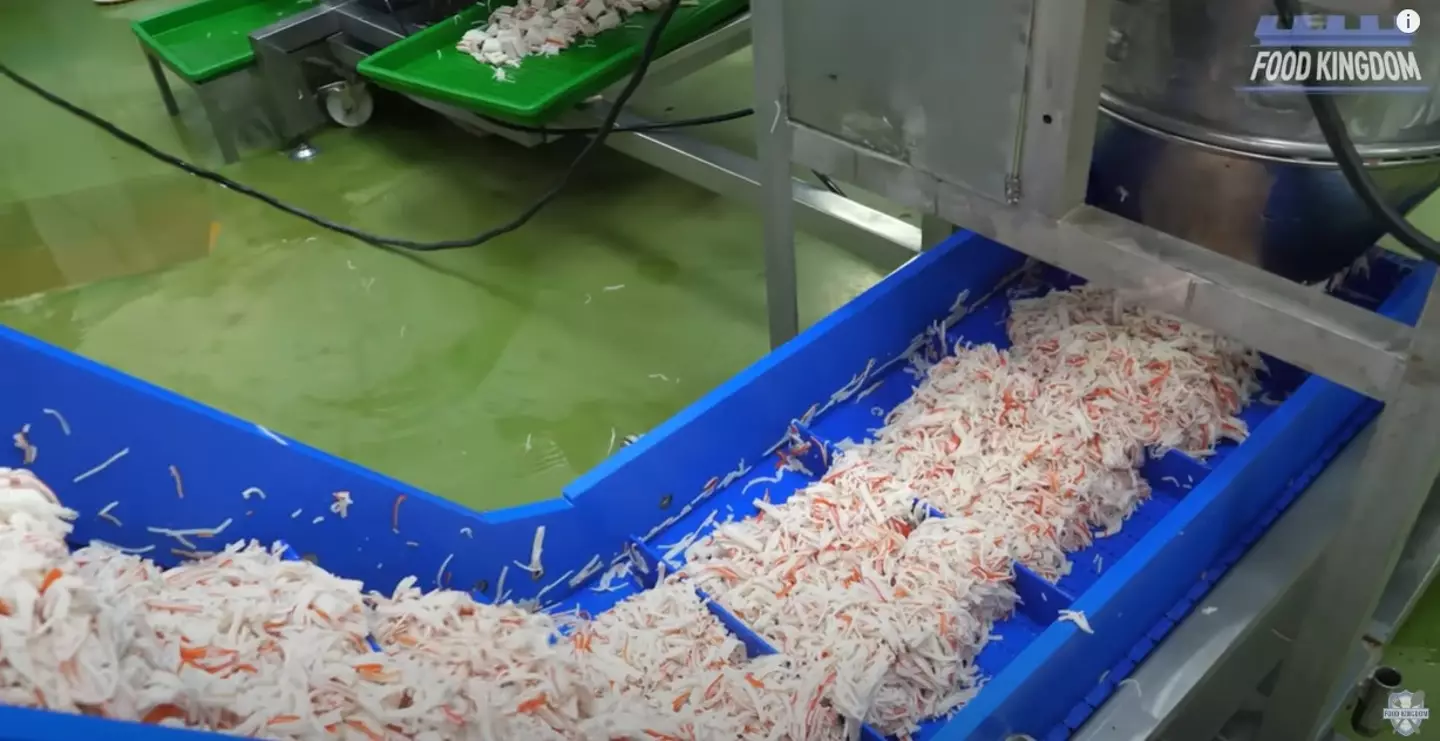
Crabstick fans are retiring them from their fridges after seeing the truth behind how they’re made, and there’s a good chance you’ll feel the same way once you’ve seen it for yourself.
Or perhaps not - after all, chicken nuggets and sausages are still going strong despite their unsavoury manufacturing processes being common knowledge.
In short, where sausages are concerned, there’s a lot of mashing and grinding, no shortage of blood and gore, and a not-insubstantial amount of offal thrown in too.
Advert
The process of how sausages are made is often the reason people quip they don't want to know 'how the sausage is made' but would rather just shut their eyes and tuck into them.
Crabsticks, it turns out, have similarly unsightly origin stories.
A viral YouTube video from Animal Kingdom has been doing the rounds that lifts the lid on the way in which crabsticks are made, and it’s certainly a case of not being able to unsee it once you’ve, well, seen it.
Advert
You might struggle to think of much else once you’ve seen the great grey piles of matter that precede the orange-cased sticks that it will become.
If you’ve got the stomach for it, let’s dive into the details.

First up you’ll see the miscellaneous meat that starts things off, and the first point of order is that it’s just frozen fish meat mixed with whatever else has been leftover from other processes. Crab meat probably has little to no involvement.
Advert
Generally speaking, the grey meat that gets pulverised into a paste will come from Alaskan pollock, although it’s probably best not to check the purity levels there.
The meat is tossed into a mixer where it’s mashed up and churned into a thick paste with egg whites and wheat, and it’s given another good grinding to get it into a clay-like, concrete-coloured state.
Just a quick check-in before we continue: how’s that stomach feeling?
Good? Great.
Advert
Next up, the grey goo is fed into another machine that processes it into a long strip of meaty matter. That strip is then spun together with others until it looks like a woven rope.
The point of this process is to create a texture that mimics crab or lobster, which is miraculous if not unpleasant to think about too deeply.

Some of the product is then sold as surimi - otherwise known as substitute crab meat - while the rest is wrapped in an orange, crab-adjacent casing to become the crabsticks you used to know and love. Sorry about that, but you can’t say you weren’t warned.
Advert
Much like those who take one of Morpheus’s pills and see the Matrix for what it is, some people simply can’t handle the truth.
"I will never purchase this ever again!” said one horrified viewer, adding: “Thank you for opening my eyes!"
"I always thought this stuff was disgusting, now I KNOW it is,” said another who, to be fair, doesn’t sound overly surprised that the non-descript matter of a crabstick is maybe not something you’d naturally find in nature.
There are plenty of brave people out there who will happily tuck into their crabsticks regardless, of course.
"I love adding lots of mock crab meat to my delicious pasta salad recipe,” said one strong-stomached soul. “See, now y'all went and made me hungry!!!"
Another said: "To be perfectly honest, I like the product. It's very affordable and makes a very good cold crab salad,” said another.
Now that you know the truth, are crabsticks still on your personal menu or not?
Topics: UK Food, Fast Food, Restaurants and bars
